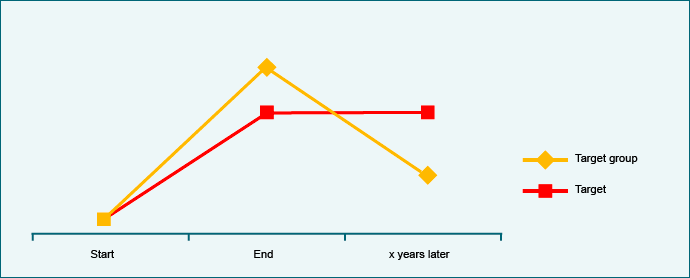
Characteristics
The target group’s actual development is compared with the planned development beyond the end of the project.
Example
Three years after the end of the intervention, 30% of young mothers in Region x know about the link between clean drinking water and health. This is more than before the project, but less than at the end of the project, and less than planned.
| Advantages | Disadvantages |
| It shows to what degree the set objectives were achieved. | It is not known whether and how the target group’s situation would have changed without the project. It is not possible to clearly attribute the effect to the intervention. |
| A plausible case can be made for whether an intervention has made a contribution to the planned effects. | |
| It can show whether an intervention was sustainable or not. | |
| The methodological know-how is available or can be learnt. |
Suitability
It is suitable as a legitimising factor when there are agreed objectives or when it is enough to state a plausible case for an effect. It is put to use when the sustainability of the intervention needs to be studied, and when a comparison with a control group is too much work or ethically questionable. Due to the time lag, the information is available too late for immediate legitimation and for short-term steering and learning. It can, however, be used for the organisation’s long-term development and strategic direction.

